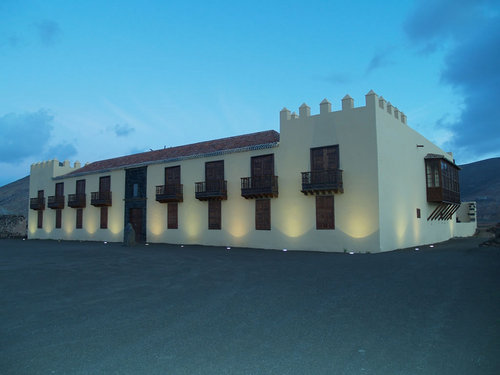Remote times and first settlers of Fuerteventura.
The existence of the Island of Fuerteventura has been known about since the dawn of time. Phoenicians , Greeks and Romans had already heard of it. The Romans, for example, called it Planaria (due to the absence of highlands) or Capraria (due to the abundance of goats that lived there wildly). There are some problems in assigning a date to the first human settlements, various sources date them back to the year 1,000 B.C. but the oldest discovered human remains analysed with the method of carbon-14 date them in the year 300 B.C. and they were natives of the North-West area of Africa.
It is believed that it was the King of Mauritania Juba II who was the first to settle here definitively driven by the progressive desertification of his lands and local wars around the year 30 B.C. They were noble, peaceful and just people, who worked in shepherding, agriculture and shellfish harvesting and fishing. At this time Fuerteventura was known as Erbania, which originated from “Ar-Bani”, which means The Wall, in the indigenous language of Gran canaria. This name referred to the defensive wall built on the Peninsula of Jandía and which separated the island from two opposing kingdoms. The inhabitants of Fuerteventura called their island “Mahoh”, which meant “My Country” in their language.
European colonization of the Island.
Now in the 15th century and as we mention in the history of Corralejo, the entrance of the European expeditions occurs in order to exploit and colonise the island. It was Jean de Bethancourt, who in 1402 and with purely financial aims to obtain raw materials such as natural textile dyes, began the conquest of the Canary Islands after obtaining permission from King Henry III of Castile. It was not easy at the beginning for those expeditioners. After leaving on 1 May from the French port of La Rochelle with several ships and around 250 men, they made two stopoffs for supplies in Galicia and Cadiz and they saw more than half of the crew defect, leaving only 63 sailors. Finally they managed to arrive at the destination and set up the first colony on the Canary Islands in San Marcial de Rubicon, which we now know as Playa Blanca located on the southern tip of Lanzarote.
From there they began the first expeditions around Fuerteventura and, after a brief visit to the peninsula to obtain more men and supplies, they settled in the protected inland area of the island. In 1404 Betancuria was founded near the island’s most fertile area, Vega del Rio Palmas, and it became the island capital for four centuries. During this year they managed to dominate and put an end to the two Kingdoms which were in power in Fuerteventura, that of Maxorata and Jandia. Their two kings on seeing the superiority of the invader’s resources decided to surrender obtaining, though, many financial and hereditary benefits. In 1405 the conquest of Fuerteventura came to an end.
Military transition up to the modern times.
In 1476 the island becomes a Lordship dependent on the Kingdom of the Catholic Monarchs and governed by the military and noble families from the peninsular who brought together political, civil and financial power for centuries. This new social order was known as that of Los Coroneles (The Colonels). In 1711 these clans changed their place of residence to the La Oliva neighbourhood which had been developing for years due to its better conditions of agriculture and access, making it the capital of the island for several decades. Fuerteventura increasingly welcomed more settlers, including French, Italian, and Dutch ones, attracted by the economic opportunities that were emerging. At this time, the production of wheat, barley and rye for exporting is strengthened.
In 1812 after the promulgation of the first Constitution in Spain (in the Courts of Cadiz) the Lordships were abolished and Fuerteventura changed its territorial organisation in order to come under the province of Gran Canaria. During that time, the municipalities which the island is currently divided up into were also established. The Colonels gradually lost power and at the same time La Oliva lost its splendour. The last colonel died in 1870 but already years before in 1860, Puerto Cabras (the current Puerto del Rosario had won capital status of Fuerteventura following years of increase in its socio-economic fabric and the growth of businesses and administrations.

Fuerteventura, the beach of the Canary Isles.
Actually Fuerteventura has turned in one of the most popular destinations in Spain and also in Europe according with TripAdvisor. Some of the arguments for get that are the magnificent and impressive beaches, exquisite gastronomy, people hospitality, the unique and exceptional climate and a lenght etcetera.
Check TripAdvisor award La Oliva council is the second preferred destiny in Spain and 19th on Europe
Check TripAdvisor award Fuerteventura’s Island has been proclaimed as the most popular island of Spain.
Follow us:




